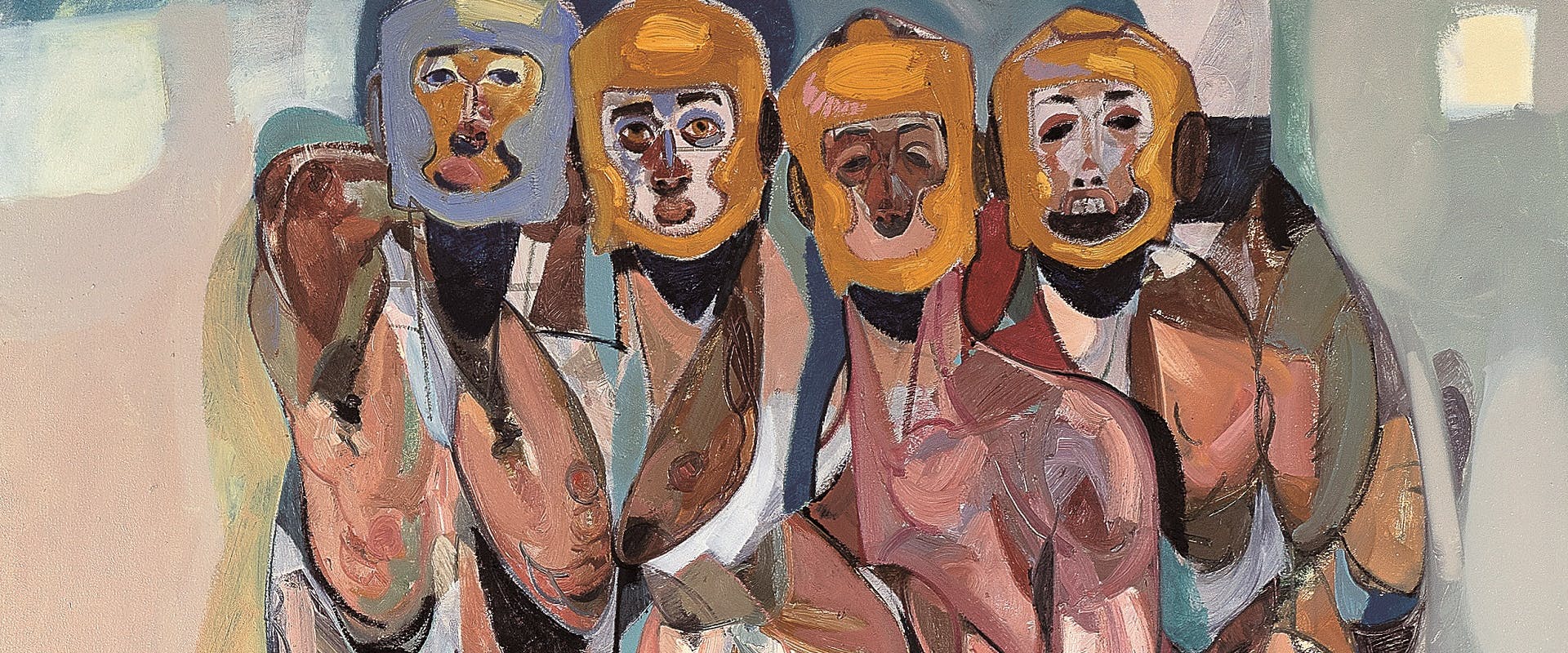Figures and symbols in the art of Tesfaye Urgessa on show at the Andito degli Angiolini in Pitti Palace
The rooms of the Andito degli Angiolini in Pitti Palace confirm their vocation as a space for contemporary works at the Uffizi Galleries by hosting the "Tesfaye Urgessa. Beyond" exhibition from 18 December 2018 to 3 February 2019.
Born in Addis Abeba in 1983, Tesfaye Urgessa followed in the artistic footsteps of his family and completed his studies at the University School of Fine Arts and Design in 2006, remaining there for three more years as a teacher. In 2009, thanks to a scholarship from the Deutschen Akademischen Austauschdiestes (DAAD), he moved to Stuttgart, where he enrolled at the Staatliche Akademie der Bildenden Künste.
His arrival in Europe opened new paths: travels, visits to museums, experiences gained in an academic environment, all of which would strongly influence his painting style. Urgessa, in fact, transformed his live encounter with 20th-century art (from German Expressionism to the School of London) into an occasion for comparison, with an eye to overcoming it, by developing a powerful identify that would guarantee appreciation of his own works by critics and by the art market.
The thirty-five pieces on show in the rooms of the Andito degli Angiolini in Palazzo Pitti reflect the explosive creativity of these achievements, with a selection that includes mainly works from the last two years, with just a few important exceptions. Thus, if Trapped in the Flesh – painted on the occasion of the Florentine exhibition - has been chosen as the opening focus, the exhibit itself is in chronological order. It starts with Waiting from 2010, an emblematic work of the period in which Urgessa, newly arrived in Germany, takes a disenchanted look at solitude in the Western world, at its rituals, and phobias.
The artist is motivated not only by his narrative intentions and by social criticism; his aim is more to foster a dialogue with the onlooker, based on a common experience of life. For example, in the Die Beobachteten series of paintings - started in 2014 and of which the eighteenth and most recent piece is shown here - Urgessa uses the overhead perspective typically seen with security cameras to solicit an exchange of roles between the onlooker and the figures in the painting, who, by looking out, are transformed from “observed” to “observers”.
This reciprocity, however, implies the involvement of Urgessa, who usually identifies with his figures to such an extent that he inadvertently adopts their poses while painting them on his canvas: “If one recognizes himself or herself in my figures as I recognize myself in them, they will definitely recognize himself in me", he says.
This triangulated experience is triggered by entangled and at times, deformed and mutilated bodies, always naked and shown against objects from everyday life, without any apparent logic, filling canvases with extreme, yet balanced solutions that pose questions as well as evoke memories. Not even Urgessa knows the origin of these shapes, which surface in his mind without stopping, transforming the construction of his painting into an anguished clash, in which - often radical - “regrets” represent an almost obligatory stage. There is no premeditation in his compositions, but rather a decision to adhere to the logic of the subconscious and chance, for a meaning that is sometimes wry and sometimes irreverent. Therefore, if in Die Waschlappen the bath mitts transformed into slippers create a domestic counterbalance to the solemnity of the Holy Family, then in Ich halte dich fest halten 2, his daughter’s pictorial interventions provide the key elements of the painting, together with the title, which borrows a curious linguistic expression invented by the little girl.
The exhibition also includes a drawing and four monotypes to exemplify Urgessa's familiarity with the techniques and materials. Although now he can work out of a large studio in Nürtingen, near Stuttgart, Urgessa continues to draw by spreading paper out on the floor as he did when he first came to Mannheim in 2009, when, having no alternative, he would spread his sheets out on the ground, letting footprints or coffee stains become a feature of the piece.
The exhibition is also showing one of the three self-portraits painted by Urgessa in tribute to the collection in the Uffizi Galleries, displayed in a symbolic pairing with a hypnotic Portrait of a Man: not a self-portrait painted using a mirror or a photograph, but a portrait from memory, also passed through the powerful filter of the artist’s imagination.
